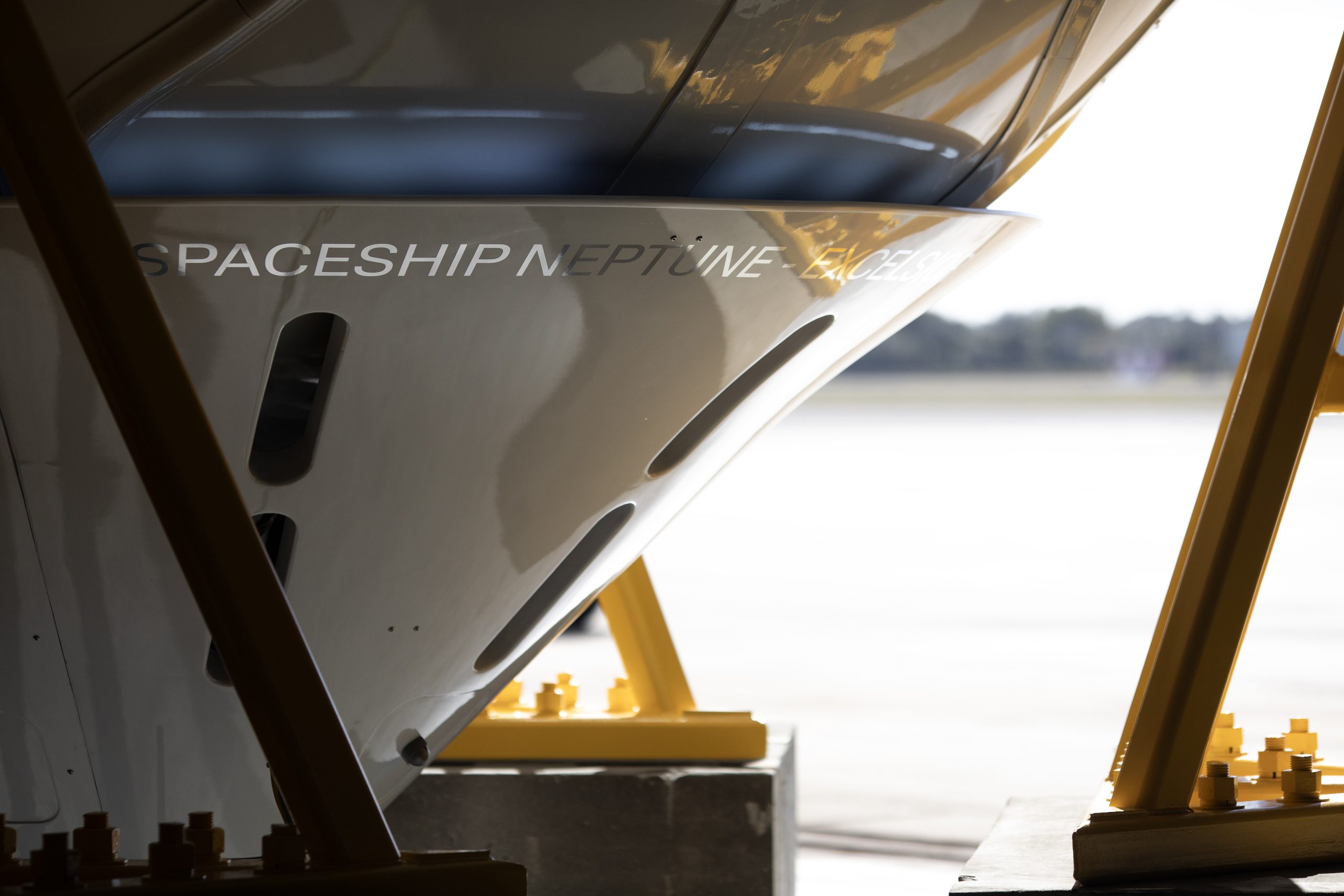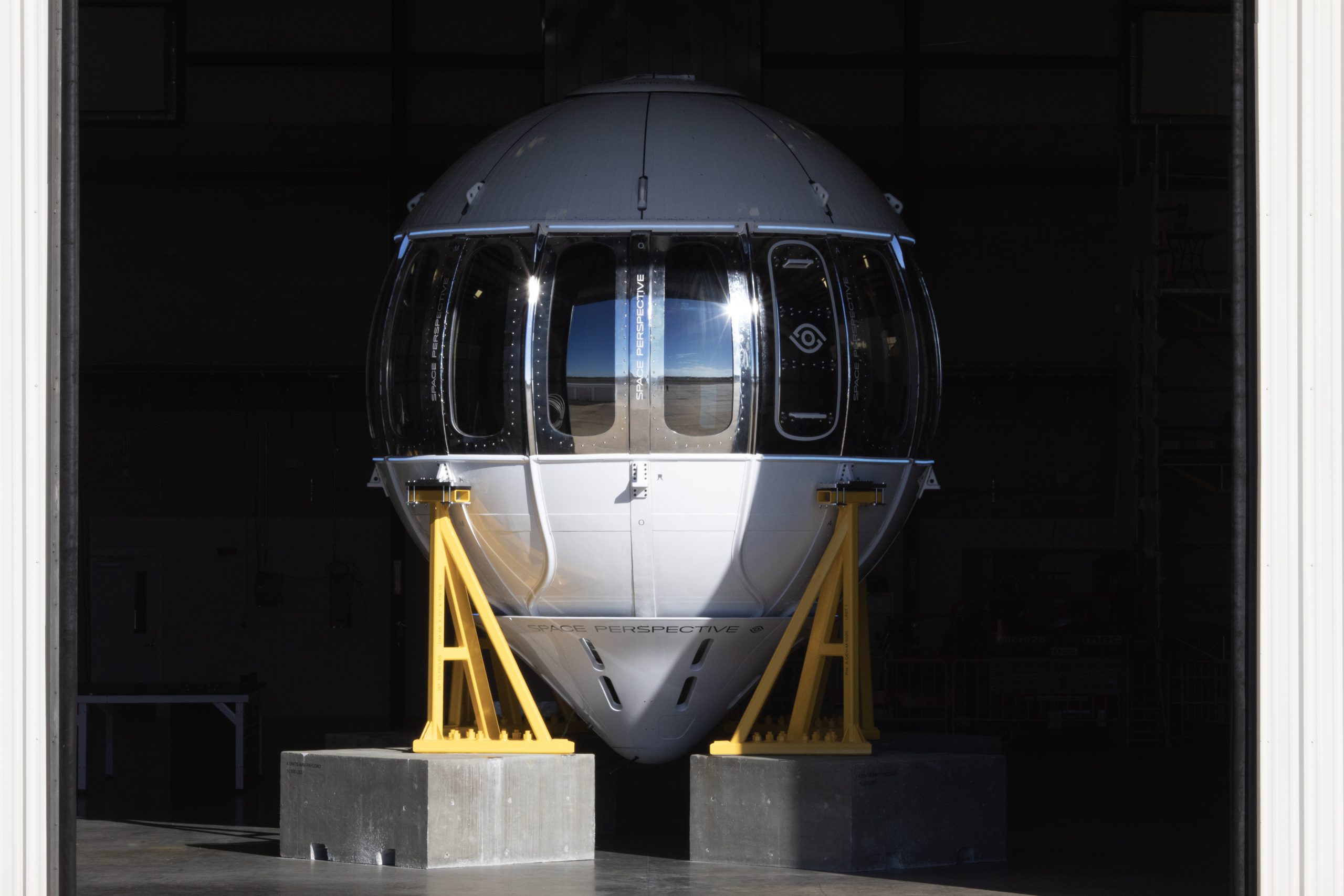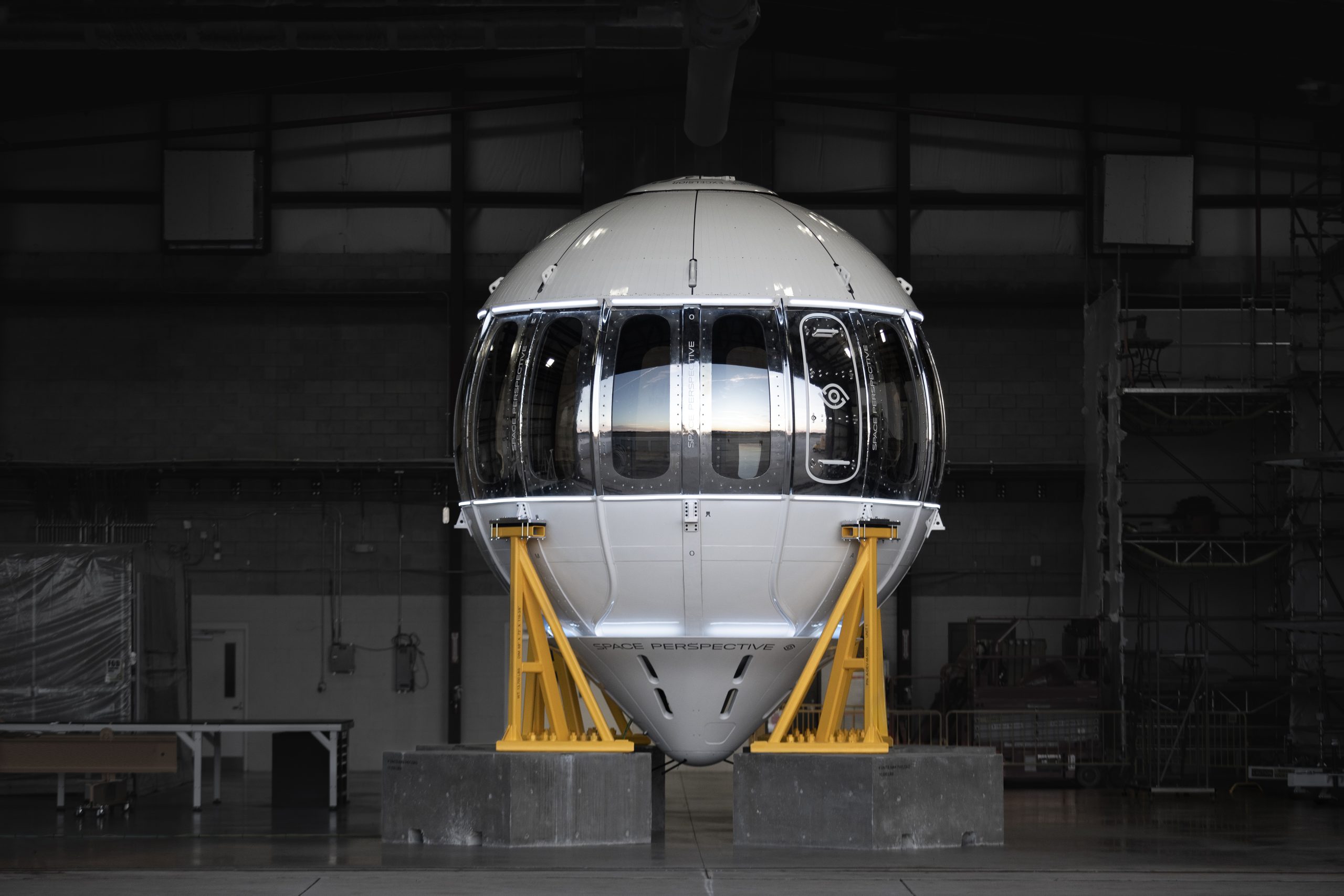Space Perspective’s new Neptune – the third commercial suborbital spacecraft ever to be built successfully – is ready for its closeup.
Created by a team of 160 engineers and designers, it’s a perfectly round 16 feet in diameter.
“We started with an elliptical design, but the pressure makes it want to be a sphere,” says industrial designer Dan Window.
Space Perspective’s team has worked on every U.S. human spacecraft over the past 40 years, including NASA, SpaceX, Boeing, Virgin Galactic, Blue Origin and the U.S. Navy.
The company says Neptune’s pressurized capsule, propelled slowly by a SpaceBalloon™, will offer the safest, most luxurious and most responsible way to experience space.
It combines proven technologies in a ground-up design, making spaceflight accessible to those who’ve dreamed of reaching the stars but never thought it possible.
It also sets a new benchmark for comfort, much of which came from Winter and his team in the company’s design department. “My responsibility was working on the layout and design of the capsule, to make it functional for passengers,” he says. “We are not engineers – but our job was to make it work inside.”
Neptune offers unparalleled views with the largest windows ever incorporated into a spacefaring vessel, for uninterrupted views of the horizon and beyond.
It also offers more than 2,000 cubic feet of pressurized volume, providing plenty of space for eight passengers and a captain. That means roughly twice the volume of Virgin Galactic’s Spaceship Two and Blue Origin’s New Shepard, and about four times SpaceX’s Crew Dragon.
And because it’s pressurized, no space suit is needed. “Passengers can wear whatever they want,” he says. “It could be street clothes, but nothing that would scratch the windows or floors.”
Neptune features a patented splash cone, developed through extensive experimentation, for a safe and gentle water landing. After splashdown, the cone floods, becoming a capsule-stabilizing sea anchor for a gradual descent and retrieval by Space Perspective crew members. “We must have done 50 or 60 tests to simulate the water,” he says.
The spacecraft’s test flight is imminent – scheduled within in the next few months – with an actual flight coming up shortly afterwards.
Certainly, the demand is proven, with 1,700 tickets pre-booked for launch from Florida’s Space Coast.
And why not? With no rockets, weightlessness, g-forces or training, the $125,000 price seems almost a bargain.
For more, go here.















